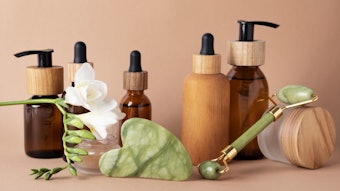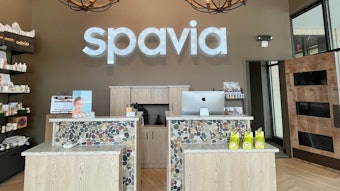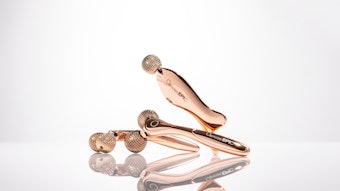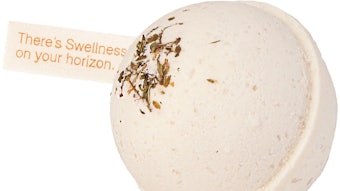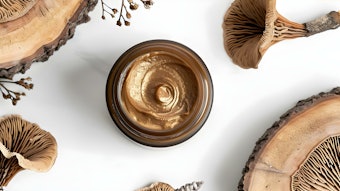
No matter how knowledgeable and conscientious, we esthetic professionals often overlook one significant factor that might be affecting the health and beauty of our clients’ skin—and perhaps even that of our own. That big baddie, of course, is environmental pollution and the villainous airborne nanoparticles it produces.
In the last few years, skin care product companies have become aware of pollution’s impact on skin and have built campaigns around it. Clarisonic, L’Oréal, Clinique and Olay are all examples of this. To stay ahead of the curve, our esthetic industry needs to address it, too.
Absorption Issues
For reference, a nanometer (nm) is a unit of measurement of the most miniscule proportions. One nanometer is one-billionth of a meter. A sheet of paper is about 100,000 nanometers thick, and a strand of human DNA is about 2.5 nanometers in diameter. Nanoparticles—a.k.a. ultrafine particles—are between 1 and 100 nanometers.
For estheticians, it is the toxic nanoparticles produced by pollution we need to be keeping an eye on. Why? Because of their miniscule size, they can penetrate the skin’s barrier in a way other materials cannot. For example, a lipid—fat—molecule in a moisturizer cannot go deeper than the uppermost stratum corneum. But when something has the capacity to penetrate deeper into the skin, it has much more potential to be disruptive and cause harm to normal cellular activity. We have already seen this with UV rays.
Outdoor Pollution
Outdoors, UV damage from the sun is not the only harmful culprit waiting to wreak havoc on our innocent complexions.
According to an article published in The Guardian regarding toxic air on Sept. 5, 2016: “Air pollution is a global health crisis that kills more people than malaria and HIV/AIDS combined, and it has long been linked to lung and heart disease and strokes. New research is uncovering its impact on brain health and skin.”
Traffic pollution is particularly bad for the skin. Already nanoparticles (also called particulate matter or PMs) which contain nitrogen dioxide and other harmful chemicals, are strongly linked to cancer. But there is now evidence they can cause wrinkles, accelerate signs of aging, interfere with DNA and break down our natural skin barrier.
This stimulates the melanocytes to produce an overabundance of pigment and brown spots and can actually heighten the intensity of UV light to cause even more damage to the skin tissue. Additionally, there is evidence these toxins can increase the production of extra blood vessels that cause redness, irritation and rosacea.
Indoor Environment
Our homes are hotbeds of pollution, too. Radon, carbon dioxide, mold, pollen, dust mites, household cleaning products, pet dander and allergens can be equally as irritating and damaging to the skin as the air outside. In fact, anything in an aerosol or spray, particularly if it is scented, leaves microscopic debris floating in the air. Just because you cannot see it, does not mean it is not there.
Likewise, those working in a professional kitchen over a hot flame several hours a day or those who are avid cooks are vulnerable to some of the same kinds of harmful nanoparticles as a factory worker or harried commuter outdoors.
Information, Please
We have effective treatments you can do in your practice, but first things first. Soapbox alert: In order to treat something you have to know exactly what factors you and your clients are dealing with.
Intake Form. You are all using robust intake forms with every new (with updates for existing) clients, yes? On yours, ask about exposure. How many hours a day do they commute on the freeway? Does their profession expose them to pollutants? Do they work in an airtight building with no circulation? Do they fly a lot? Do they have allergies? Do they live near a factory with smokestacks? How many aerosol household cleansing products do they use? Do they regularly burn candles in the home? Do they smoke or live with a smoker (and yes, this applies to marijuana, too)?
Air Quality Index (AQI). Every day, the Environmental Protection Agency publishes its AQI online, which measures all the particulate matter in the air. Get yourself and your clients accustomed to checking this daily the way you check the weather. If the AQI is anything more than moderate, shower immediately with a scentless cleanser after you get home from work.
Home Testing. High levels of carbon dioxide in the air can cause skin deoxygenation and asphyxiation. Testing kits for the home can be ordered online for anywhere between $25-$45 and are easy to use.
Radon is a radioactive gas. To find out if you live in a susceptible area or have a higher than normal level of radon indoors, contact your local Environmental Protection Agency. They offer a “Consumer’s Guide to Radon Reduction.” Radon testing kits can also be purchased online or at you neighborhood hardware store.
Professional Troubleshooting
This is where our expertise truly comes into play.
Treat sensitivity first and foremost. Gentle enzymes and the galvanic current are great at cleaning the skin without causing any irritation.
Use microcurrent for calming rosacea and acne. Ultrasound is great for removing buildup from cosmetics and pollutants. Also add LED light to all these electrotherapies to calm and rejuvenate.
For home use, retail masks—sheet, clay and crème based—to calm and soothe on a weekly basis in between salon visits.
Environmental Words to the Wise for Clients
Our clients turn to us for advice. For yours, feel free to copy the following on a flyer or on your website on tips to neutralize—or at least minimize—environmental assaults on their skin.
SKIN
- Know your Environmental Protection Factors (EPFs). Use the best topical ingredients. Check your product lines for the following: niacinamide (vitamin B3), copper, selenium, manganese and iron. These are all great EPFs that should be applied every morning under sunscreen.
- Alternate your topical regimens. At night, use Retin-A—not too often because keeping the natural skin barrier intact offers greater protection against pollution. One to three times a week depending on the skin condition is ideal. Vitamin E also helps to buffer the skin against sun and smog, and peptides, ceramides and stem cells help to repair damaged skin and rebuild tissue. All these ingredients can be rotated on a weekly basis. During the day, keep it simple to avoid irritation. Apply vitamin C, plenty of hydration—moisturizers and serums—and sunscreen.
- Use mineral cosmetics. To be used on top of EPF/SPF formulas to add an extra veil of protection during the day.
- Double cleanse at night. It is now an absolute necessity in today’s polluted environment. A deep pore cleanser will remove the grime that builds on our skin during the day. Using two types of cleanser—an oil- or cream-based product before the deep pore formula—can ensure every scrap of makeup is wiped off. This is important when using mineral-based makeup that can adhere to the skin more than traditional formulations.
- Use an electronic cleansing brush. A cleansing brush sloughs off dead skin cells quicker and when used consistently, can improve skin tone and texture. Plus, it removes any oil or debris plugging pores and allows better product absorption. For sensitive skin, one to three times a week; for less sensitive skin, once a day.
- Tone for the better. Toners re-establish the pH of the skin and prepare the way for hydration and the active ingredients in creams and serums.
- Go easy on the exfoliation. We need to protect our skin barrier as much as possible these days and being over aggressive can create vulnerability. Use in-salon treatments to do the heavier work and avoid the deeper peeling protocols during the summer months.
HOME & CAR
- Suck it up then mop it after. Recommend the use of a high-efficiency particulate arrestance filter on vacuums and a micro-fiber mop with plain water to clean floors. Ask house guests to remove their shoes when entering the home and keep a big floor mat by the door to reduce what gets tracked in can make a difference.
- Use unscented wherever possible or natural scents if you must. Essential oils can be used to fragrance the home. Lavender, rosemary, eucalyptus and spearmint oils make ideal alternatives to traditional air fresheners. Unscented laundry detergents and cleaning products for household chores can drastically reduce sensitivity.
- Buy organic. They offer simpler formulas made from safely sourced ingredients. Make sure the lines you invest in are truly organic, properly tested and registered. The term “organic” is often abused and can be misleading.
- Drive skin safe. When driving with the air conditioner on, keep the vents off the face. This will prevent dehydration.
On a worldwide scale, we are taking action in the fight to combat environmental catastrophe. Closer to home, the political is indeed personal.
Counseling our clients as new developments occur enables them to avoid complexion disaster, harness the good and neutralize the bad. Taking steps now will make a significant difference to how healthy their skin will look immediately and into the future.





